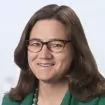- within Transport and Immigration topic(s)
At the May 2025 Open Meeting Press Conference, FERC Chair Christie discussed the "Sunset" Executive Order. In responding to whether he would like to put a one-year sunset date on certain FERC regulations, Christie mentioned his strong dissent in many Order No. 2222 compliance orders, noting that he would "love to put a one-year sunset on that." (If he could get the votes.) And, he reiterated his position that Order No. 2222 did not make sense at the time and still doesn't. Order No. 2222 does not make sense because the Federal Power Act (FPA) is fuel neutral. A green electron from a resource on the distribution system is worth the same as a coal-fired electron on the transmission system in a FERC-run market. (Indeed, FERC has decided that DERs are not even capable of providing reactive power to transmission providers, such that DER electrons are worth even less than transmission system-located electrons.)
Many of the most populous states strongly disagree that all electrons are created equal. And, such states are willing to consider factors other than their ratepayers' "electricity pocketbooks" in valuing electrons. They implicitly consider how their ratepayers' entire pocketbooks will be impacted, including factors such as transmission cost impacts, health cost impacts, and climate change cost impacts. Such states are willing to ask their ratepayers to pay more for electrons from renewable DERs. A FERC market cannot and will not pay DERs for such externalities. As a result, Order No. 2222 is unnecessary to unleash DERs; renewable DERs will be unleashed in states that want them to be unleashed.
Christie's time at FERC is presumably limited, which raises the question of whether he could try and muster the votes to eliminate Order No. 2222 before his departure. The overwhelming barriers of trying to repeal his perhaps least favorite rule – Order No. 679 – which is the result of a federal mandate, are not present. Order No. 2222 is not the result of a Congressional mandate, but is, in part, the result of Neil Chatterjee's failure to recognize that DERs are far better off in state "programs" than in FERC markets. (The notion of "dual state and federal market participation" cannot justify Order No. 2222, as it only adds layers of complexity, jurisdictional, and double compensation arguments, and allegations of illegal subsidies of wholesale market participants.)
The elimination of Order No. 2222 can be justified on the grounds that because FERC is fuel-neutral, DERs, even if aggregated, are not economic in FERC markets, which provide no compensation for external DER benefits. Indeed, a lack of participation in DER Aggregations was anticipated in light of state programs that recognize such externalities. The nearly five year-old prior blog post – The Best Description of Order No. 2222? "Landmark" "Transformative" "Ground-Breaking" "Barrier-Busting" "Competition-Boosting" "Game-Changing" "Bold" or "None of the Above Due to Traditional Net Metering" – has seemingly proven true in two of the most populous states, California and New York, which were the first movers in DER Aggregation. DERs in those states are plentiful; DER Aggregations are not.
CAISO and NYISO already had some form of DER Aggregation when Order No. 2222 was adopted. CAISO rather quickly was able to comply with Order No. 2222, given its DER Aggregation program that opened in 2016. On the CAISO website is a List of Distributed Energy Resource Provider Market Participants, i.e., DER Aggregators. Seven entities are listed. Of the seven, three lack a market-based rate (MBR) tariff (one entity would not need MBR), and thus presumably are not actively selling FERC-jurisdictional services. One participant is SDG&E and another a large municipal utility (Silicon Valley), hardly new market players. NYISO's web-posted Distribution Utility and Aggregator Contact Information lists five DER Service Providers. Of the five, three have MBR tariffs, so presumably only those three are selling FERC-jurisdictional services. (NYISO's full compliance with Order No. 2222 is not expected until the end of next year, but it implemented its pre-Order No. 2222 DER Aggregation program in 2021.) Thus, NYISO and CAISO have about the same participation rate of signing up less than one DER Aggregator a year, per their public postings.
We do not yet know about potential DER Aggregation in most regions because in the four other organized markets, there are no DER Aggregators under Order No. 2222. Their proposed implementation dates for Order No. 2222 are as follows: November 1, 2026 (ISO-NE), June 1, 2029 (MISO), February 1, 2028 (PJM), and Quarter 2, 2030 (SPP). These schedules are another basis for repeal, as repeal would not be disruptive and significant administrative cost savings are still possible.
DERs, and renewable DERs, in particular, may well be of great value, but they are not of great value in fuel-neutral FERC markets, where energy, capacity, and transmission reliability products are bought and sold. Those states that see great value in DERs can ensure that value is recognized, although they must remain within their jurisdictional lane, but they do not need Order No. 2222 to ensure that result.
The content of this article is intended to provide a general guide to the subject matter. Specialist advice should be sought about your specific circumstances.


